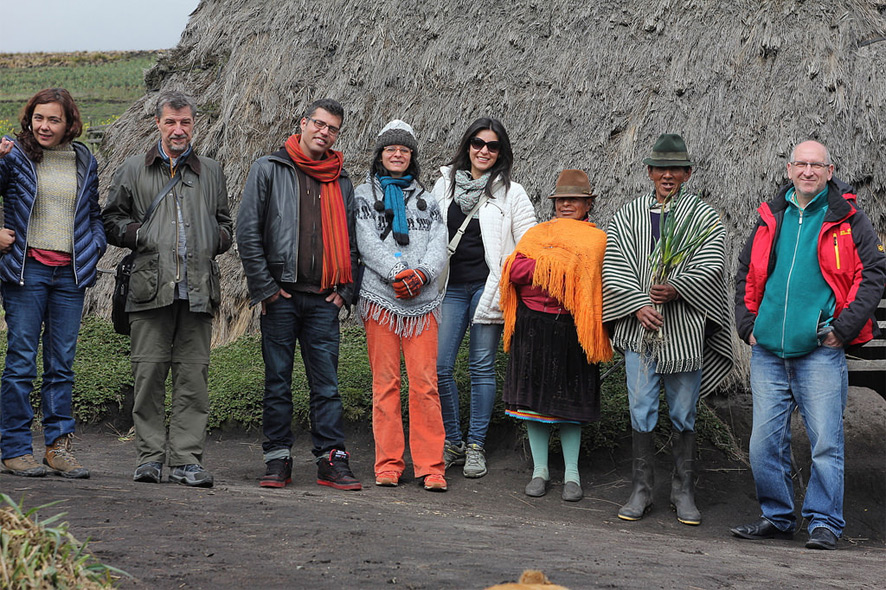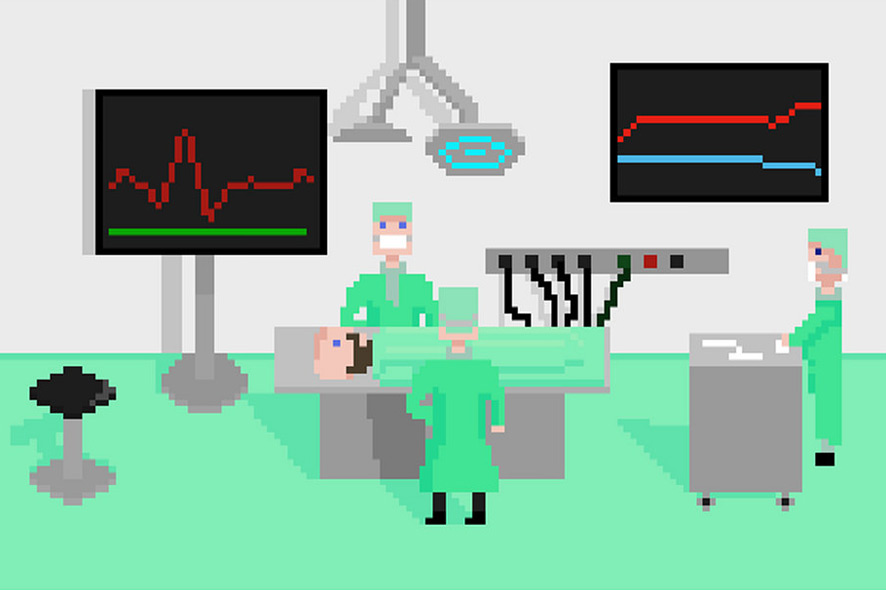Ars Electronica Center Linz, May 10, 2016, 10 AM. Today, four weeks after 20 experts from around the world gathered here to deliberate and decide, the prizewinning projects in the Prix Ars Electronica’s five categories were presented to media outlet representatives. So let’s take a first look!
Computer Animation / Film / VFX: Rhizome
We kick things off with the category that’s been with us since the very inception of the Prix Ars Electronica in 1987. “Rhizome,” an animated film by Boris Labbé (FR), features an extraordinarily original visual style that got rave reviews from the jury: “Rhizome is a very complex and complete piece of artwork, blending complementary techniques in a post-digital painting-like visual poem.” In this black-and-white animated work, Boris Labbé conjures up a world that’s in constant motion and in which everything, from the tiniest element to the largest one, is interconnected. There’s incessant metamorphosis of the characters that were rendered in India ink and water colors, scanned in, and then animated and assembled into looping film sequences.
Interactive Art +: Can you hear me?
“A powerful and playful act that engages in questions challenging who gets access to information and data, privacy and the state of surveillance.” Considering their evaluation, the jury was obviously impressed with “Can you hear me?“ by Christoph Wachter (CH) and Mathias Jud (CH). When Edward Snowden’s disclosures revealed that American and British intelligence agencies were conducting constant surveillance and espionage in Germany’s federal government district in Berlin, the two artists proceeded to set up an antenna of their own. Ultimately, everyone within range of their open public WLAN—from tourists to members of the Bundestag—was cordially invited to use it to send messages, photos and other files. The NSA and the GCHQ, in turn, were ultimately forced to record this traffic too and bug the channel.

Credit: P2P Foundation
Digital Communities: P2P Foundation
An example of a “new generation of communities that help to build communities” is how the jury in the Digital Communities category described the P2P Foundation that was founded by Michel Bauwen (NL) and has now been honored with a Golden Nica. P2P stands for peer-to-peer, a form of network that some of us might have gotten acquainted with downloading files via platforms such as Napster, Gnutella, Kazaa and BitTorrent. In these P2P networks, there’s no need for a central server on which files are stored to memory; all the computers participating in the network can assume a variety of roles and jointly strengthen the network. But P2P is good for a lot more than file sharing, as demonstrated by the P2P Foundation Wiki, the huge body of knowledge that’s been amassed by the P2P Foundation.

Credit: Jonas Bodingbauer
u19 – CREATE YOUR WORLD: Die Entscheidung
In the category targeting young people under 19 years of age in Austria, 17-year-old Jonas Bodingbauer (AT) won over the hearts and minds of the jury with his computer game entitled “Die Entscheidung” (The Decision). “He is leveling criticism at how a lot of video games function and what they do with players, but this critique can also be applied more broadly to other areas of life.” This game is a matter of life or death: one player steps into the role of a man who’s just found out he has cancer, while the other plays the malignant tumor and earns credits to nurture its growth.
Visionary Pioneer of Media Art: Jasia Reichardt
Our 2016 Visionary Pioneer of Media Art is Jasia Reichardt (PL/UK). The prominent art critic and exhibition curator was born in 1933 in Warsaw. Her name is, above all, indelibly linked to a trailblazing exhibition that ran in 1968 at London’s Institute of Contemporary Arts and then at the Corcoran Gallery of Art in Washington, D.C. and the Exploratorium in San Francisco. “Cybernetic Serendipity” was the title of this much-discussed show in which, instead of human artists, the spotlight was suddenly on computers, machines and algorithms as “artists.” Under Jasia Reichardt’s direction, artists worked together with mathematicians, engineers and technology specialists to jointly create a completely novel form of presentation long before everyone was talking about cooperation between art and science in light of their tremendous potential for innovation.
The 2016 Golden Nicas, Awards of Distinction and Honorary Mentions
You’ll find the complete list of all those singled out for recognition with Golden Nicas, Awards of Distinction and Honorary Mentions in 2016 at ars.electronica.art/prix/en/gewinner
Where do we go from here?
Over the coming weeks, the Ars Electronica Blog will be running interviews in which the 2016 Golden Nica recipients elaborate on their prizewinning work. You can also follow us on Facebook and Twitter, and be sure to subscribe to our newsletter! Throughout the 2016 Ars Electronica Festival (Theme: RADICAL ATOMS and the alchemists of our time), set for September 8-12, 2016 in Linz, you’ll be able get a close-up look at many of these prizewinning works of media art in the CyberArts exhibition running in Linz’s OK Center for Contemporary Art. The festival lineup also includes the Ars Electronica Gala at which the Golden Nica statuettes will be bestowed on the grand prize winners, as well as the Prix Forum in which they’ll personally discuss their work and do some Q&A with festivalgoers.
